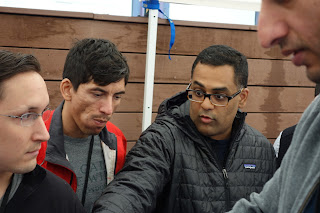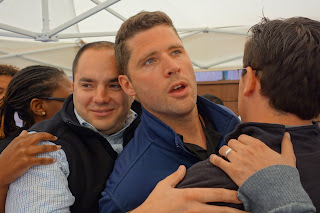When CEO bonuses are tied to US News rankings
Here’s a quiz. Can you guess who posted the following messages on Twitter?
You might be surprised to learn that it was Ben Harder, @benharder, chief of health analysis at US News and World Report, the magazine that publishes “data, rankings & tools to help consumers choose hospitals, doctors, health plans & more.”
Probably more than anyone in the country, Ben understands the inherent limitations in any such rankings. More important, he understands that the rankings are designed to advise patients with complex medical conditions. They are not an indication about the general level… Continue reading
This is bad for academic medicine
When the history of the patient safety movement is told, it will be appropriate that the Association of American Medical Colleges* will be left out. The recalcitrance of this organization in acknowledging patient safety problems was legendary for the first decade of this century. The AAMC’s leadership not only refused to acknowledge the depth of patient harm but also precluded use of the organization’s arms in working on the issue.
For example, when an AAMC committee was to be established in the mid-2000’s on patient quality and safety issues, the leadership insisted that the word “safety” be omitted from the committee’s name and charter.
For example, when people would submit articles on patient safety to the AAMC’s main journal, Academic Medicine, they would be summarily refused, refused even the courtesy of peer review. The authors were told that patient safety was not an issue of public… Continue reading
Marseille comes to NAPA















Peer reviewed does not always mean unbiased
Our review of the Blackman and Skolnik stories raises the issues of informed consent and shared decision making. One part of that process might be to review the literature about the proposed procedure. But we can’t always count on such studies being accurate or unbiased.
Here’s an example, stemming from the Blackman story, that shows an appalling lack of professional ethics on the part of the Journal of Pediatric Surgery
As noted by Rosemary Gibson and Janardan Prasad Singh in The Treatment Trap (page 122, with my emphasis):
The people on the front lines who lie down on the gurney are the forgotten ones. The only shield they have is the wisdom to know the difference between solid evidence and commercial promotion. That wisdom may come from their own due diligence or a stroke of luck in finding good people whose sole purpose is their best interest.
Should it take a law?
The Telegraph reports on these comments by Sir Robert Francis about the NHS:
“I have learned from my son, and from other trainees, that we can learn a lot from the fresh eyes and idealism that doctors and nurses have when they start out. It is so important to exploit that, and not to crush it.”
Sir Robert believes that many of the worst failings in the NHS occur when clinical staff become powerless — are left “shrugging their shoulders” rather than challenging poor care.
He was encouraged, he says, by changes introduced by the Government to improve openness and transparency, including an overhaul of NHS regulation, ratings for hospitals and improvements to training of staff.
But he feels more should be done.
In particular, the leading QC wanted changes in the law to put the onus on staff to speak out if patient care is… Continue reading
Protecting the public trust–a robotically assisted liver donation case
One common theme of the Lewis Blackman and Michael Skolnik stories is that of a surgeon who neglects to engage in a proper informed consent with a patient about the relative risks and benefits of a new surgical procedure. That both cases end in tragedy is immensely sad, but it would be a mistake to view the cases as isolated examples. Indeed, they are representative of a broader violation of the public trust. As I have noted with regard to the Blackman case:
[These are] cases in which an ambitious surgeon with a new technique or using new equipment takes on a case without providing full disclosure to the patient or family about the potential for increased risk compared to proven methods. Some hospitals are complicit in promoting such “experiments” by not requiring IRB approval (i.e., human subjects review) or approval by some peer ethics committee. … Continue reading
The practice of medicine is an emotional teeter-totter







The residents arrive at Marseille








Negotiating at Marseille

Our second session focused on negotiation skills and applying
negotiation to clinical practice. This exercise was so fun! It required
problem… Continue reading
Faces of the Marseille experience (cont.)





